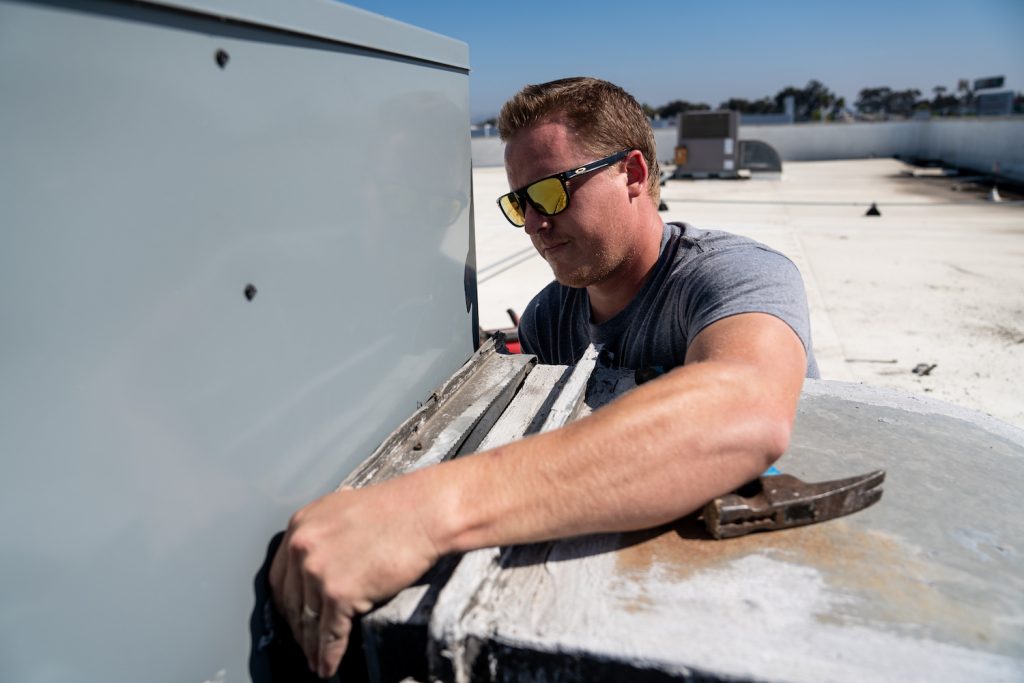Have you been popping the pain medicine? If so, you’re not alone. The topic of pricing often leads to monster headaches for business owners. Honestly, nailing down a solid price list for HVAC services may be one of the toughest jobs you’ll face. This is true whether you launched your one-man show three months ago, or you’ve got a full crew of techs and you’ve been at it for 20 years. But don’t worry, we’ve got your back here.
How to price your HVAC services: 3 easy steps
There’s not a one-size-fits-all process to create the ideal price list, but our guide will walk you through the three most important keys. (You can put the meds back in the cabinet.)
1. Research your market
The first step to making an effective HVAC price list template is to do a little good old-fashioned market research.
Know your competitors
Start off with a few questions. Who in your area offers the same HVAC services and is roughly the same size as your business? What do they charge? Can you undercut all the local competition?
Keep in mind that attracting bargain hunters may not leave you with the profit margin you’re looking for. Most people with HVAC issues want a company they can trust to do the job right, and they’re willing to pay a little more for it. One way to earn their trust on the front end is presenting your brand in a professional manner and simply showing up on time.
Know your customers
In addition to scoping out the competition, here are a few more questions to help with your market research:
- Who are your customers?
- What do your customers want most?
- What are their service request trends?
- What services are most common?
- What times of the year are significantly busier than others?
- What makes one HVAC business stand out from another?
Answering these questions will help with pricing and give you a realistic sense of how your business fits into your local HVAC scene.
2. Know your costs
You’re in the HVAC business to make money. To do that, you’ve got to make a profit. And to make a profit, you’ve got to charge enough to cover time, supplies, and other company expenses. Instead of randomly setting a price on your technicians’ labor, calculate the exact dollar cost of that labor. Make sure your service costs cover the many expenses already attached to running an HVAC business.
These costs can be broken down into three categories: material, labor, and overhead.
Material costs
Anything and everything from ladders and face masks to valves and pumps qualify as material costs. Just like your auto-repair shop charges for brake pads and oil filters, your HVAC business should track the total cost of supplies. This will ensure that ladders and valves won’t end up costing you money.
Labor costs
According to Paycor, labor costs account for as much as 70% of total business costs on average.1 This includes employee hourly wages, HVAC tech salaries, benefits, and payroll. If your business functions as a middleman, you’re also responsible for hiring HVAC technicians and making sure they get paid.
Overhead costs
Overhead costs include everything else that factors into running, marketing, and managing your business. Examples include office staff who handle invoicing and accounting, monthly rent, utilities, taxes, insurance, advertising, and outsourced labor costs. Don’t forget mileage, maintenance, and fuel for your fleet! These indirect costs need to be woven into the prices offered on your HVAC price list template.
3. Comparing the pricing models
Once you know what you need to charge for services, it’s time to choose your pricing model. The two most popular pricing models for HVAC companies are hourly rates and flat fees.
Charging hourly rates
- Pros: Most businesses prefer this model. Pricing by the hour means your rate of return actually matches your team’s time and labor. Instead of pricing specific services like—replacing a filter, for example—you’re putting a price on the value of your service. What if you started replacing a filter and found that it took much more time and effort than a standard job? Unless you priced your HVAC service by the hour, you’d be locked into that one flat fee. But how much do you charge an hour? Your hourly rate should be based on your technician’s level of expertise. Seniority should be considered here.
- Cons: If a technician is slow and struggles to complete the job quickly, the customer can get hit with sticker shock. On the flip side, if they’re too fast, the job may not cover expenses. There’s a timing sweet spot for sure. But the main downside to hourly rates is that timekeeping can become a mess if you still handle scheduling and invoicing manually. Fortunately, HVAC software systems like Housecall Pro allow you and your technicians to track time from the second they head off for the job to the moment they complete the repair—all on one app.
Charging flat fees
- Pros: Clients love knowing exactly what they’re getting into. No expensive surprises! Flat fees allow HVAC business owners to set the price, justify the reason behind it, and give customers peace of mind that the job will be done at the original cost.
- Cons: The most significant disadvantage of charging a flat fee is the possibility of a project taking longer than expected. If an AC unit repair is slated to run for about an hour but ends up taking your technician two hours, your deficit costs may ruin the profit from that job. Flat rates can be a little risky for small business owners, especially during busy seasons.
Careful with memberships
There are pros and cons to offering your customers a maintenance agreement too. That customer will likely be loyal to you since you’re already servicing their system twice a year. They’ll become familiar with your brand and reach out with any problems. But the discounts you extend with memberships could leave your profit out in the cold. Make sure the annual fee covers your tech’s time, the cost of supplies, and overhead.
Bottom Line
A successful HVAC service price guide will take some research and careful planning. To help your business turn larger profits, you need one eye on all your material and overhead expenses and the other eye on your labor costs, making sure that they’re all covered by your company’s income. The right price will make clients happy and grow your business. Smiles all around—it’s a win-win for everyone!
Get the all-in-one HVAC app from Housecall Pro that helps you keep track of everything from scheduling to cash flow.






